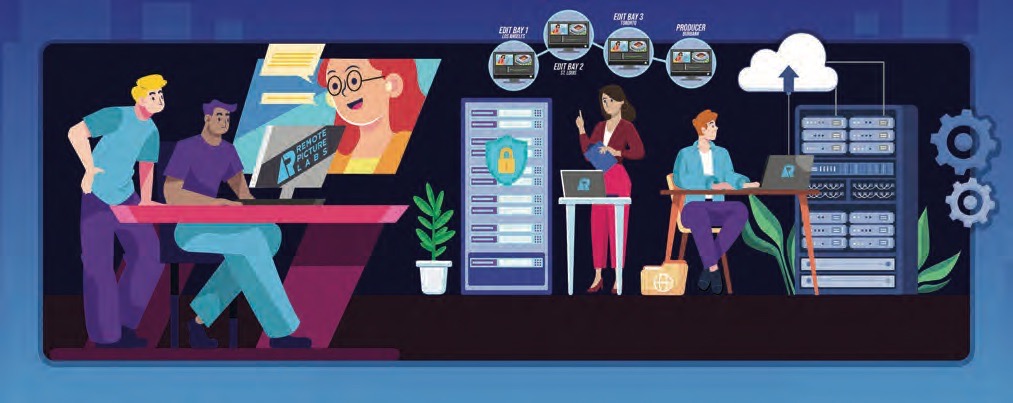
This article was published in CineMontage (Q4-2022).
By Jennifer Walden
COVID lockdowns may have hastened the adoption of remote editing, but filmmaking teams are now enjoying the benefits that this new norm provides. That includes minimizing downtime by using time zone differences to one’s advantage (as editor Tom Eagles did on “The Harder They Fall,” editing in New Zealand while the production team was shooting in Santa Fe) or just saving time by eliminating the commute to a production office or editing facility. There certainly have been growing pains in the transition to remote editing, but it’s becoming easier to embrace this workflow as the process evolves.
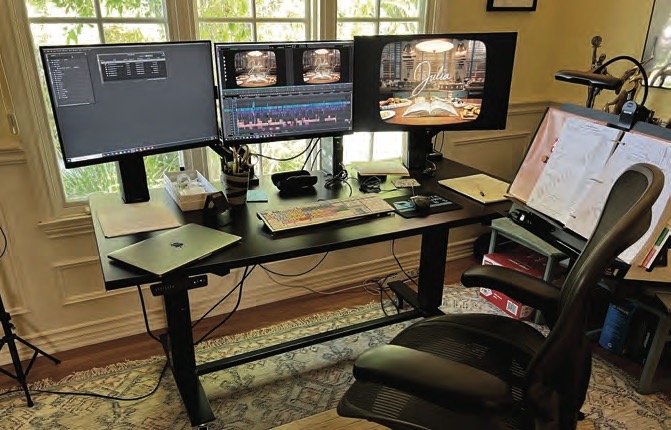
One company improving the experience of remote editing and decentralized creative collaboration is Remote Picture Labs (RPL; remotepicturelabs.com), based in Burbank, California. In the early days of lockdown, J/KAM Digital (a company specializing in production and post-production equipment delivery, setup and technical support) joined forces with Creative Mobile Solutions (which specialized in tapeless workflows for live events and studio-based shows) to form Remote Picture Labs RPL. By leveraging their years of experience in both equipment rental and cloud-based media storage and sharing, RPL devised a highly efficient remote editorial solution that its leaders say can replicate (and even rival) a traditional editing facility workflow.
RPL Media Technologist Erik Beauchamp said, “We wanted teams to be able to focus on being creative, and that meant restoring the collaborative workflow so teams would be able to work and operate as if they were in rooms next to each other, just like in a normal on-premises setup. That was the inspiration to build Remote Picture Labs the way we did.”
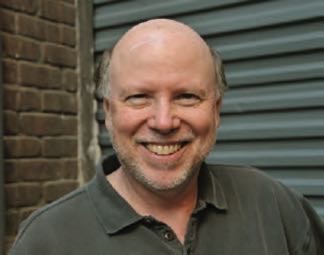
Three-time Emmy-nominated editor and two-time Eddie-award winner for editing “Boston Legal” and “Ally McBeal”, Philip Neel, ACE is currently cutting the second season of the HBO Max dramatic series “Julia,” inspired by chef Julia Child’s life. Neel has worked with RPL on a few series, starting with “Queen of the South.”
“When COVID first hit, everyone was trying to figure out how to edit from home and interface with producers and directors to implement changes as though we were in an office setting,” Neel said. “One option was to edit with the media on external drives and email the bin to our assistants who had mirrored drives with the same media. They would then make QuickTime videos to share with the showrunners. It just got to be very complicated. Then our post-producer discovered RPL, which had implemented the Teradici-based remote workflow, and it instantly became practical to edit from home.”
Content is the most crucial part of a production. It needs to be shared — dailies from the set need to get to the editor, the editor’s cuts need to get to the filmmakers, visual effects teams need scenes and sequences to work against, those shots need to get back to the editor, and so on — but it must also be kept safe through security and redundancies.
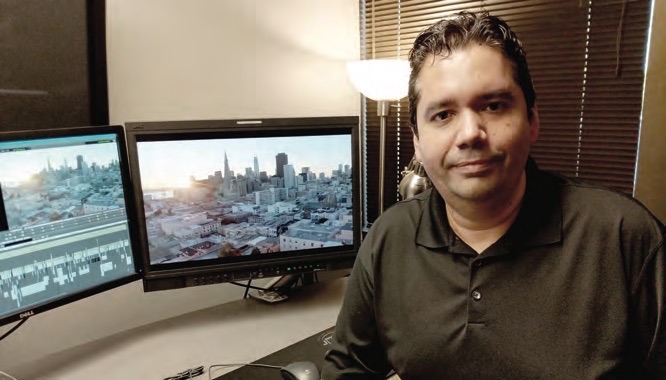
RPL offers a virtualized, data center-based, private cloud solution. This means all content and redundancies are centralized in a secure data center. Unlike other remote editing approaches where editors connect to computers set up in offices or in machine rooms at editing facilities, RPL has virtual workstation units and shared storage servers housed in racks at a colocation facility (a type of data center where equipment, space, and bandwidth are available for rental to retail customers), which editors and RPL technicians access virtually. RPL techs don’t have to go to the facility in order to help clients with technical issues. They can manage, control, and restart all of the user’s services in just a matter of minutes from any location. Beauchamp said, “We have monitoring services that allow us to see when issues arise, and we deal with them most often before editors or production teams are even affected by them. We’re able to quickly solve any issues thanks to the tool sets that we continue to put in place.”
As a virtualized platform, RPL can react to clients’ needs almost immediately. They can add editors and other team members in just a few hours, deploy a whole new editorial environment with a few mouse clicks, and make adjustments to the workstations instantaneously. “Whether the editor is working with higher-res source material or doing a tremendous amount of exports and transcoding or visual effects, if they determine that they need additional processing power, with a simple reboot of their workstation, we can double or triple the CPU power, add more RAM, and double the GPU power — all without having a technician go out and swap out a computer or components,” said Beauchamp.
“If a production shot twice as many dailies and needs to get that to the editor faster, we just move a virtual fader and suddenly they have more bandwidth in their environment. A lot of the dailies houses have big data lines so they can dedicate that bandwidth to that production and we can accommodate it on the other end,” added Jeff Bass, Partner at J/KAM Digital and Co-Founder of RPL.
Physically accessing the equipment is still possible, but that requires going through biometric and RFID security. “The physical security of the colocation facility could not be higher. And we matched that with the same level and care for our digital content security by setting up a private cloud environment over which we have full control,” said Beauchamp.
Not only is a private cloud more secure than a public cloud, it allows RPL to avoid a metered pricing model typical of public clouds. “Productions have budgets and want fixed pricing so that we’re not meter- ing how much data is coming in and out or how many hours these workstations run,” said Bass.
An editor connects to the workstation virtually using a zero client hardware device. It’s not a computer; there’s no operating system or hard drive for storing content locally. The editor connects the zero client device to the internet and to their own monitors, keyboard, and speakers. Then they’re ready to go. Beauchamp said, “It’s called a zero client because it has a zero attack surface. So on a security level, there’s nothing for a malicious attacker to hit. And the transmission of the stream and the input from the user go through hardware-encrypted processing (depending on the model). All we’re doing is pushing pixels and recording mouse clicks and keyboard input, and we’ve put it all together so the editor feels like they’re sitting right in front of a workstation.”
Neel agreed. “It’s very streamlined and simple. It keeps the operation really quick and efficient, as though I’m working with local drives in a production office. I’ve ramped up my internet at home to 1 Gbps download speed, so as I’m editing, there’s no audio lag or picture lag,” he said.
RPL can remotely manage the zero client device. They can monitor it, push updates, and make configuration changes without having to go on-site. Beauchamp said, “They’re incredibly reliable and robust little boxes. We’ve partnered with HP (which recently acquired Teradici) and they keep improving the quality of the codecs. We’re now using a new technology they have called PCoIP Ultra. It requires about a third of the bandwidth of the original PCoIP codec. For monitoring, it delivers higher frame rates and better-quality images at that lower bandwidth, allowing our clients to output UHD on up to four monitors.”
The majority of RPL clients use NLEs (Non-Linear Editing software) like Avid Media Composer, Adobe After Effects or Premier, or Blackmagic Design’s DaVinci Resolve. “Our environment is tailored towards the high-performance GPU accelerated workloads, so anything that requires a lot of video processing power is really well-suited for what we’ve built,” said Beauchamp. And even though the workstation is accessed virtually, it has everything the editor would have in an editing facility. For instance, if a client is using third-party effects or plugins (such as Boris FX Suite or Digital Anarchy Beauty Box), RPL can transfer those licenses into the editor’s cloud account so they’re available in their workstation.
On the support side for software-related issues, RPL can set up remote sessions to guide users through workflow problems. “Our team is comprised of not just engineers and technicians, but also skilled operators of the production software that we’re using for our teams. So in many cases, our team may have better and more in-depth information about how the systems and software work than the end users have themselves,” Beauchamp said.
Neel, who recently switched to Avid Media Composer 2022 for this season of “Julia,” said, “Erik [Beauchamp] has been extremely helpful in answering questions about the Avid and other things that come up with their system. I especially like how they can take control of my desktop almost immediately to solve an issue.”
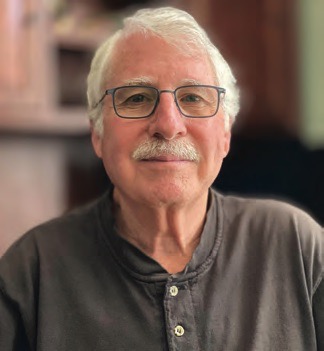
Partnership agreements with technology vendors allow RPL to test new software features and functions early on, so they can see how those updates will improve their clients’ workflows. And RPL continually implements new features and functionality on the back end to improve reliability and quality of service. “These aren’t things we charge our clients for. They see the benefit of these improvements, and the reward for us is returning customers and new projects; people are excited to continue working with us,” said Bass.
RPL deals with a wide range of productions, each having specific needs, so they create a customized package for each one, providing as many or as few services needed to get content in, edited and finished, and out for final deliveries. Services include everything from supplying dailies houses or vendors with a high-performance Signiant Media Shuttle portal (a highly secure and accelerated method for transferring files into the RPL cloud environment) to setting up editors’ workstations with software and hardware (i.e., physical equipment such as adjustable electronic desks, studio speakers on stands, large screen OLED TVs, office chairs, and more). “If they’re going to be traveling and working on a laptop, we can set up their personal computer with a software client that allows them to virtually access a workstation that has the same performance and horsepower they’d have in an editing facility. The beauty behind what we’ve designed is that it’s completely scalable and customizable on the client side,” said Beauchamp.
Neel’s setup from RPL includes furniture such as a height-adjustable workbench and a comfortable office chair, two monitors for editing and a larger one for playback, two Bose speakers, a PC keyboard that’s been remapped for Mac users, a mouse, and a 10ZiG zero client device connecting Neel to an Avid Media Composer 2022 workstation.
For the production of “Julia,” four of the eight episodes have been shot so far – three of them primarily in France, and the rest are scheduled to be shot just outside of Boston. The series footage (shot on ARRI ALEXA cameras) is shuttled to the dailies house, Picture Shop Post in Boston. The dailies are processed there and pushed to RPL’s catch station using Aspera Faspex. The assistant editors (Amy Pellouchoud, Matthew Caron, and Moe Friday) then copy the dailies to the episode drives and organize and prepare the shots in the Avid for the editors. (Besides Neel, the other two editors are Farrel Levy and David Dworetzky.)
“Usually, my assistant Amy will have the dailies put together for me by 9 AM and then I can start cutting. Oftentimes, I’ll leave one scene for myself to do the next morning in case I want to get up early. That way, Amy has time to get everything put together, and she’s not trying to hurry because I’m waiting,” said Neel. “Right now, I’ve finished editing my first episode, and the director and I remotely watched it together this morning on Moxion, with her giving me notes along the way. Once I’m done making those changes, I’ll contact her and we’ll both get together again to review. This virtual connection is very close to the experience of editing in an office setting, even though the director is 3,000 miles away.”
One of RPL’s more complex projects involved a production shot in a studio in Atlanta, with assistant teams working from offices in Los Angeles and from their homes, and editors located all over North America. This was a 12-camera broadcast-quality shoot that needed to be transferred almost in real-time. RPL sent out 10 Gb-capable laptop kits to the studio to hook into the servers on-site to handle the automated transfers of the footage into the RPL environment. They sent traditional edit kits to editors that needed them and set up software client kits for those using their own equipment. To meet this production’s physical archive requests – getting content onto LTO (Linear Tape-Open) tapes and having the ability to restore the previous season from LTO — RPL sent out a few physical workstations with attached LTO tape drives so that archived material could be restored physically and then automatically pushed into the RPL cloud-based environment.
Beauchamp said, “This was a full soup-to-nuts type environment where we managed all the incoming record streams and handled the entire turnaround to get the show completely finalized at high broadcast resolution and sent out to their delivery destinations. After we got the right physical components in place, it was a seamless experience for the end users. Even with all the complexities behind it, the editorial team really doesn’t feel the burden of all of those moving pieces and parts.”
Another essential aspect of production is communication. Remote workflows can have production team members dispersed across the globe; content review platforms like Sohonet’s ClearView Flex, Moxion (an Autodesk company), and EverCast are what bring them together. There are many options for remote collaboration and RPL can incorporate their client’s preferred platform into the workflow. “RPL is agnostic as far as software packages and collaborative toolsets. We don’t have any limitations. If a client brings us something that we haven’t had a chance to test or work through, we build a relationship with the vendor and set up a quick lab test to vet everything. Once we get that signed off and the client is happy with it, we turn it over for production. Our team is open to new workflows and toolsets; they make us, as an organization, more experienced and stronger in what we’re doing,” said Beauchamp.
As Neel said, he’s using Moxion to collaborate with the filmmakers on “Julia.” This platform allows Neel to video chat with the production team, play and review the cut, and make simple edits with the team watching. He said, “These remote collaboration platforms, like Moxion, are very helpful to bring everyone together because all they need is a phone or laptop and a WiFi connection to join in.”
“Editors are seeing that they can head to the production office for a one-on-one session, and while they’re waiting for notes, go back home and handle those notes from there. It’s one of the things that editorial teams really like. I think remote editing is here to stay. It’s been a major shift and we were forced to jump into remote editorial, but everybody’s gotten a taste of it now, and we hope that our platform will give them that ‘facility-based workflow from anywhere’ kind of experience,” said Bass.
For Neel, that hybrid approach (editing dailies at home and then coming into a facility to work with producers on the fully edited episode) offers the best of both worlds. He said, “I like the personal connection you get in an office environment. And a lot of producers like to work in person. The advantage to that is that I’m making changes while they’re watching.”
However, when doing the director’s cut, Neel prefers editing remotely from home since he’s typically communicating with a director on location. He said, “It’s more and more difficult for directors to meet editors in person, with so many shows shooting in distant cities. This virtual system puts them back in the editing room once again where they can review and collaborate in real time.”
Neel concluded, “As a result of COVID, the remote post-production interaction with other members of the team had to be developed and implemented very quickly, and it happened quite successfully, especially given the short learning curve that we all had to go through. I think Remote Picture Labs and their system helped us realize how to effectively work from home.”
Jennifer Walden is a frequent CineMontage contributor who specializes in covering post-production technology.